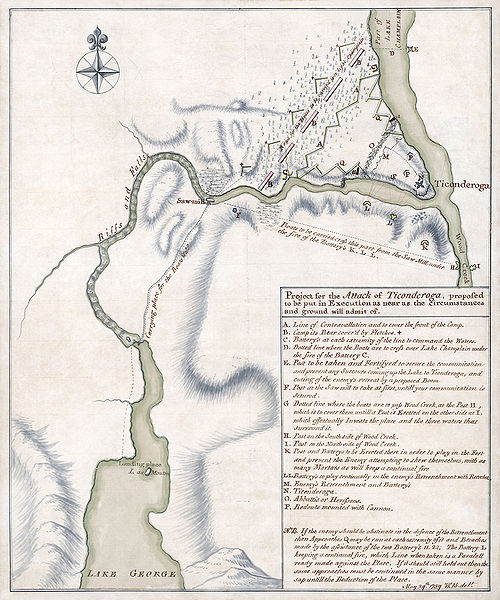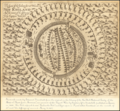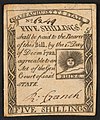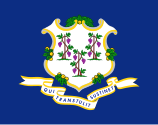Portal:New England
The New England Portal New England is a region comprising six states in the Northeastern United States: Connecticut, Maine, Massachusetts, New Hampshire, Rhode Island, and Vermont. It is bordered by the state of New York to the west and by the Canadian provinces of New Brunswick to the northeast and Quebec to the north. The Gulf of Maine and Atlantic Ocean are to the east and southeast, and Long Island Sound is to the southwest. Boston is New England's largest city and the capital of Massachusetts. Greater Boston is the largest metropolitan area, with nearly a third of New England's population; this area includes Worcester, Massachusetts, the second-largest city in New England, Manchester, New Hampshire, the largest city in New Hampshire, and Providence, Rhode Island, the capital of and largest city in Rhode Island. In 1620, the Pilgrims established Plymouth Colony, the second successful settlement in British America after the Jamestown Settlement in Virginia, founded in 1607. Ten years later, Puritans established Massachusetts Bay Colony north of Plymouth Colony. Over the next 126 years, people in the region fought in four French and Indian Wars until the English colonists and their Iroquois allies defeated the French and their Algonquian allies. (Full article...) Selected article
The Capture of Fort Ticonderoga occurred during the American Revolutionary War on May 10, 1775, when a small force of Green Mountain Boys led by Ethan Allen and Colonel Benedict Arnold overcame and looted a small British garrison. Cannons and other armaments from the fort were transported to Boston and used to fortify Dorchester Heights and break the stalemate at the Siege of Boston. After seizing Ticonderoga, a small detachment captured the nearby Fort Crown Point on May 11. On May 18, Arnold and 50 men boldly raided Fort Saint-Jean on the Richelieu River in southern Quebec, seizing military supplies, cannons, and the largest military vessel on Lake Champlain. Although the scope of this military action was relatively minor, it had significant strategic importance. It impeded communication between northern and southern units of the British Army, and gave the nascent Continental Army a staging ground for the invasion of Quebec later in 1775. It also involved two larger-than-life personalities in Allen and Arnold, each of whom sought to gain as much credit and honor as possible for these events. (Full article...)
Selected biographyEdward Mitchell Bannister (November 2, 1828 – January 9, 1901) was a Canadian–American oil painter of the American Barbizon school. Born in colonial New Brunswick, he spent his adult life in New England in the United States. There, along with his wife Christiana Carteaux, he was a prominent member of African-American cultural and political communities, such as the Boston abolition movement. Bannister received national recognition after he won a first prize in painting at the 1876 Philadelphia Centennial Exhibition. He was also a founding member of the Providence Art Club and the Rhode Island School of Design. Bannister's style and predominantly pastoral subject matter reflected his admiration for the French artist Jean-François Millet and the French Barbizon school. A lifelong sailor, he also looked to the Rhode Island seaside for inspiration. Bannister continually experimented, and his artwork displays his Idealist philosophy and his control of color and atmosphere. He began his professional practice as a photographer and portraitist before developing his better-known landscape style. (Full article...) (Full article...) Selected pictureGeneral images -The following are images from various New England-related articles on Wikipedia.
Did you know (auto-generated)
Related portalsMore did you know...
Selected State
Connecticut
Incorporated 1776 Co-ordinates 41.6°N 72.7°W Connecticut is the 3rd least extensive, the 29th most populous, and 4th most densely populated of the 50 United States. Called the Constitution State, Nutmeg State, and "The Land of Steady Habits", Connecticut was influential in the development of the federal government of the United States. The first major settlements were established in the 1630s by the English. Thomas Hooker led a band of followers overland from the Massachusetts Bay Colony and founded what would become the Connecticut Colony; other settlers from Massachusetts founded the Saybrook Colony and the New Haven Colony. In 1662, the three colonies were merged under a royal charter, making Connecticut a crown colony. This colony was one of the Thirteen Colonies that revolted against British rule in the American Revolution. (Full article...) WikiProjectsAssociated WikimediaThe following Wikimedia Foundation sister projects provide more on this subject:
Discover Wikipedia using portals |
















































































